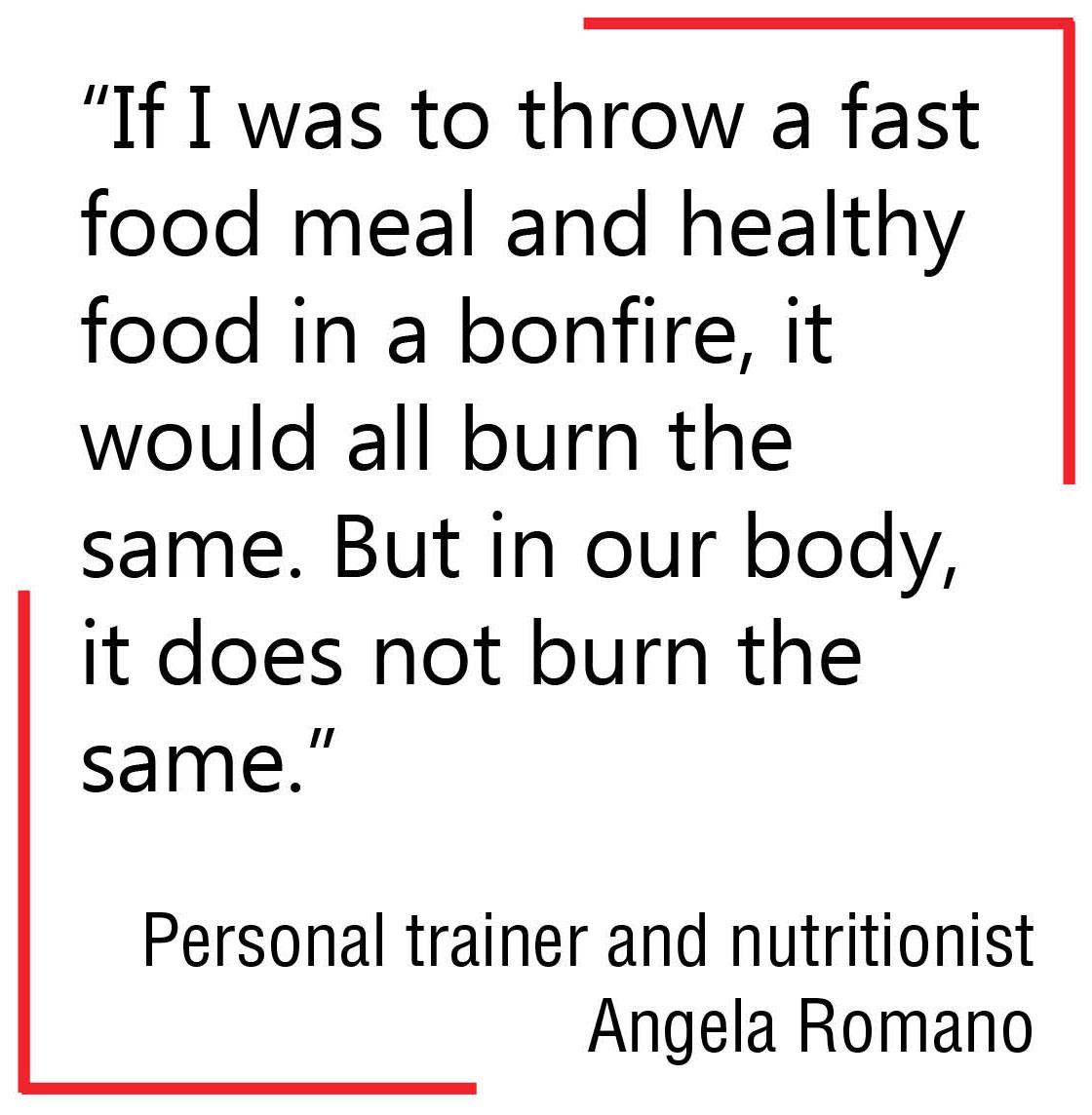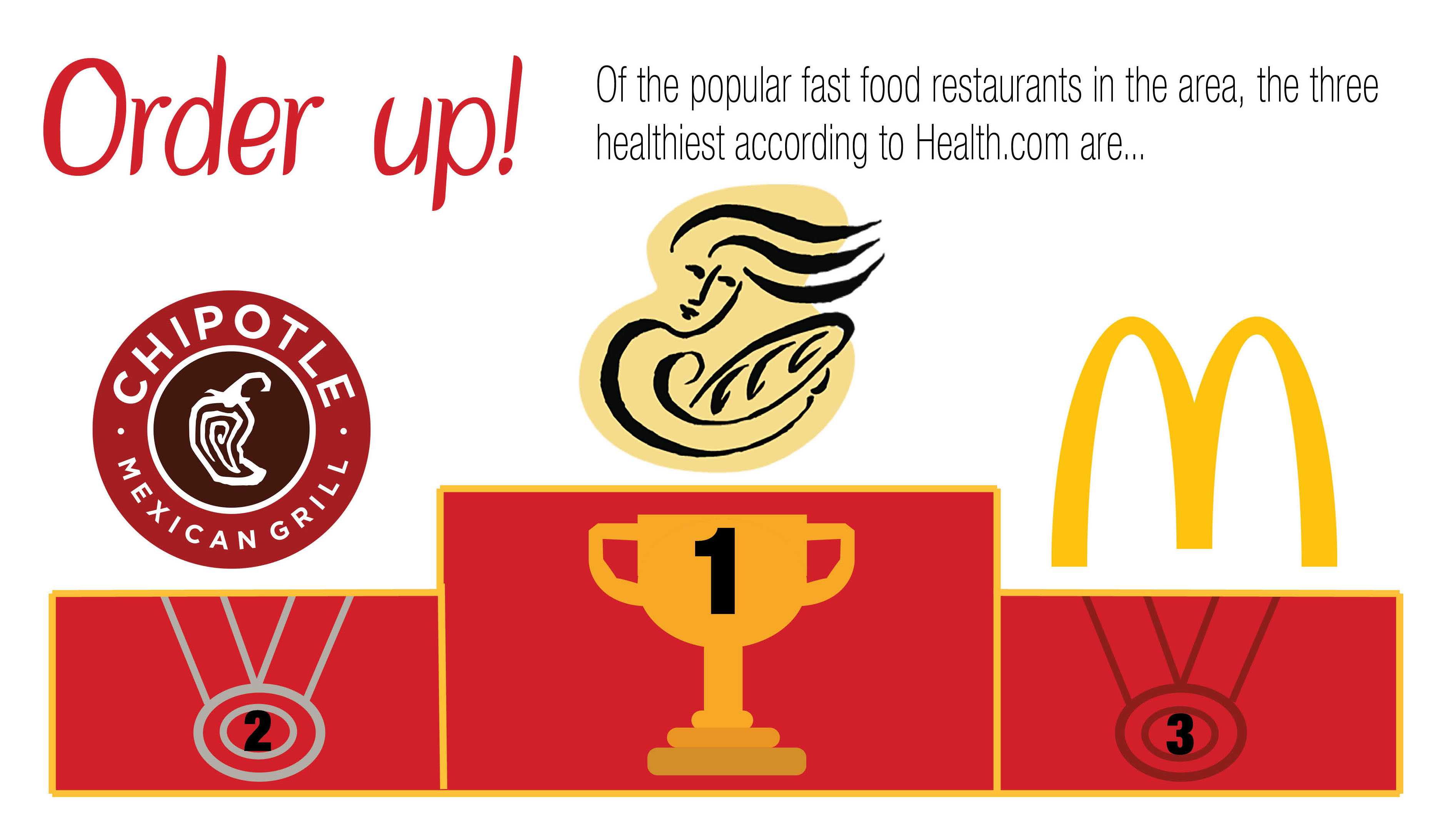Masters of disguise
Students are often tricked into thinking that certain fast food choices are healthier than others, when in fact they can be just as harmful to your body
Sophomore Tucker Ray sits in his car, starving, waiting for his dinner to be made. Lucky for him, only two minutes pass and ding, order up!
At times, some students find themselves eating fast food because of inexpensive costs. According to Angela Romano, a personal trainer and nutritionist at Spartan Sports and Wellness in Bel Air, “Fast food is a relatively good deal for the money you pay and draws more and more people in each day.”
According to Romano, there are side effects from eating fast food, such as sluggishness, fatigue, high blood pressure, elevated cholesterol, a higher risk of developing Type 2 Diabetes, heart disease, fatty liver, and even a risk for obesity and cancer.
 Fast food restaurant’s ability to portray themselves as healthy, while in reality being poor to health, makes them masters of disguise.
Fast food restaurant’s ability to portray themselves as healthy, while in reality being poor to health, makes them masters of disguise.
Romano classifies a fast food restaurant as any place that has a drive-thru or gets you your food in five minutes or less. In a survey conducted by The Patriot, 54 percent of students say that they eat at fast food restaurants for their convenience.
Twice per month, Ray finds himself eating at Burger King. “I like it [because] it’s faster and more convenient,” Ray said. While multiple students eat at Burger King, more students can be found at fast food restaurants such as Panera Bread and Chick-fil-A, which were the most popular choices through the survey.
This shift in fast food trends isn’t a surprise, as most students believe Panera Bread and Chick-fil-A to be safer and healthier than McDonald’s or Burger King. Senior Maddie Reeves often eats out at Panera Bread and Chick-fil-A. Although she still considers them to be fast food, 91 percent of students do not.
“I definitely feel like Panera and Chick-fil-A are less processed food and somewhat better for you. I’ll usually get the chicken caesar salad or mac n’ cheese from Panera, and chicken strips from Chick-fil-A,” Reeves said.
Romano refers to “healthier” restaurants, such as Subway, as “build your own” restaurants, where you can pick what you prefer. She says healthier options such as the salad or panini choices are  much more beneficial and can actually be equal to something you made for lunch at home. It’s the bigger portions and “[the] quarter hunk of bread that comes added to the side that is the problem,” Romano said.
much more beneficial and can actually be equal to something you made for lunch at home. It’s the bigger portions and “[the] quarter hunk of bread that comes added to the side that is the problem,” Romano said.
Romano adds that while students perceive Subway, QDOBA, Chipotle, or Panera as healthier choices, “It’s still eating out, and nine times out of 10, we don’t know where our food is coming from and how they preserved it. Yes, the salad option is healthier, but where did the chicken on top come from?”
As a whole, it’s all about making the choice of healthier options whether you have to go out, or make the effort to pack lunches more often, “When you’re talking about calories and about food, if I was to throw a fast food meal and healthy food in a bonfire, it would all burn the same. But in our body, it does not burn the same,” Romano said.
According to Romano, there are many things you can do to help your body, even if you have to go to fast food restaurants. One of which is the “slight edge approach.” This explains how simple things you do every day to your body can make a difference over a long period of time, like cutting soda or going to fast food restaurants less each week.
Reeves agrees, going through a personal experience of her own. “Last year, I gave up Chick-fil-A for Lent – hardest decision of my life. But I definitely had more energy and felt better just not eating all the junk,” Reeves said. “I don’t eat there very much on the weekends, but probably only a couple times a month.”
With practice, Romano believes we can all “train ourselves to learn the limits and have a healthier lifestyle.” We can stay away from harmful platters and avoid the masters of disguise.
Pia Scotto is a Community Editor for The Patriot and jcpatriot.com.



